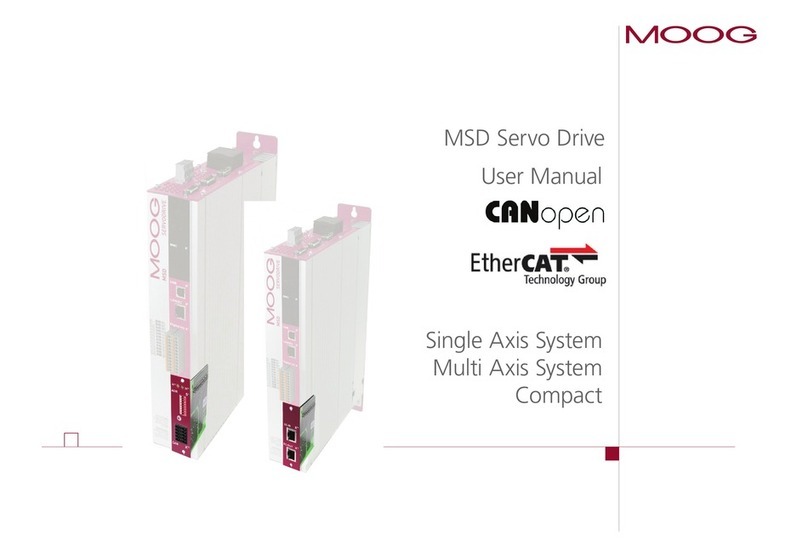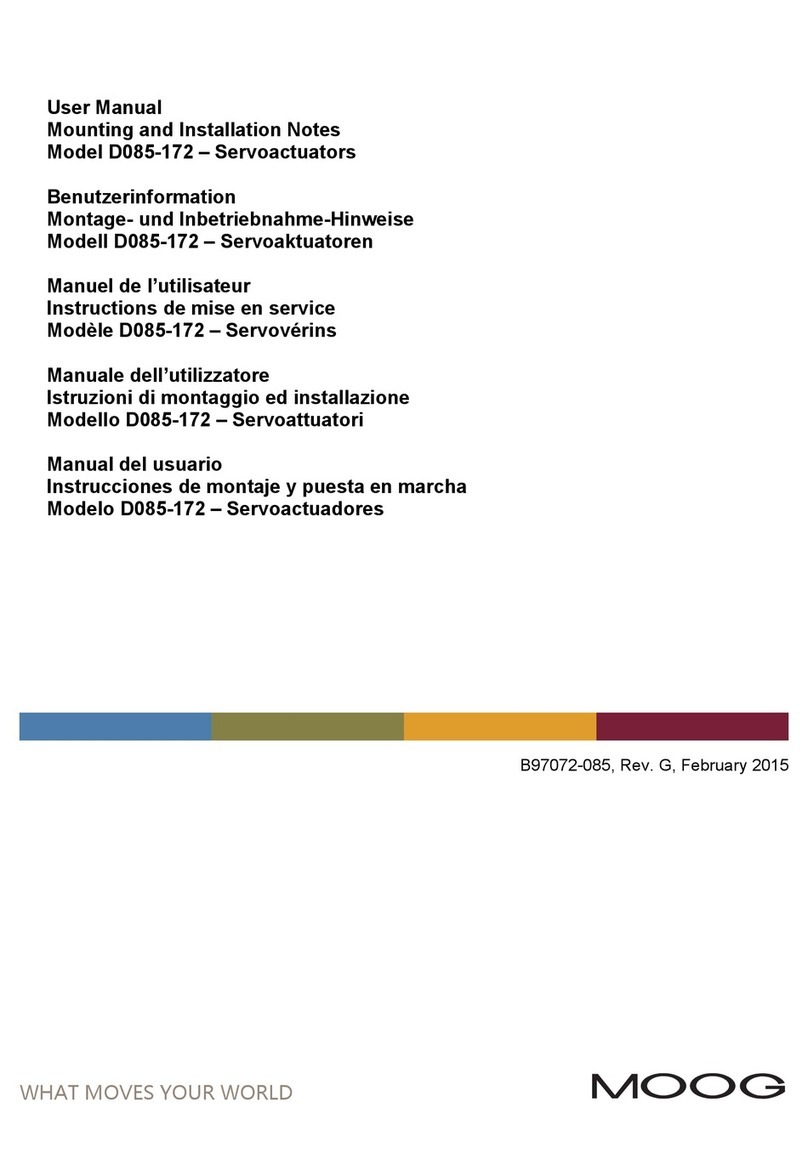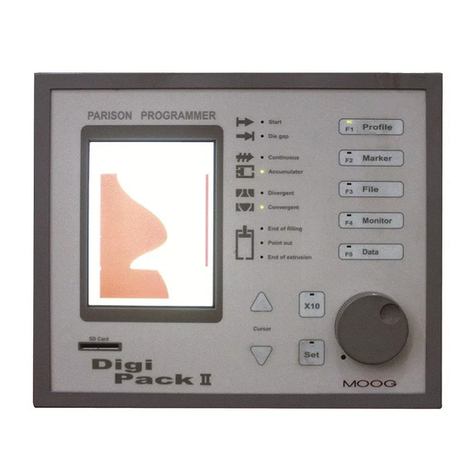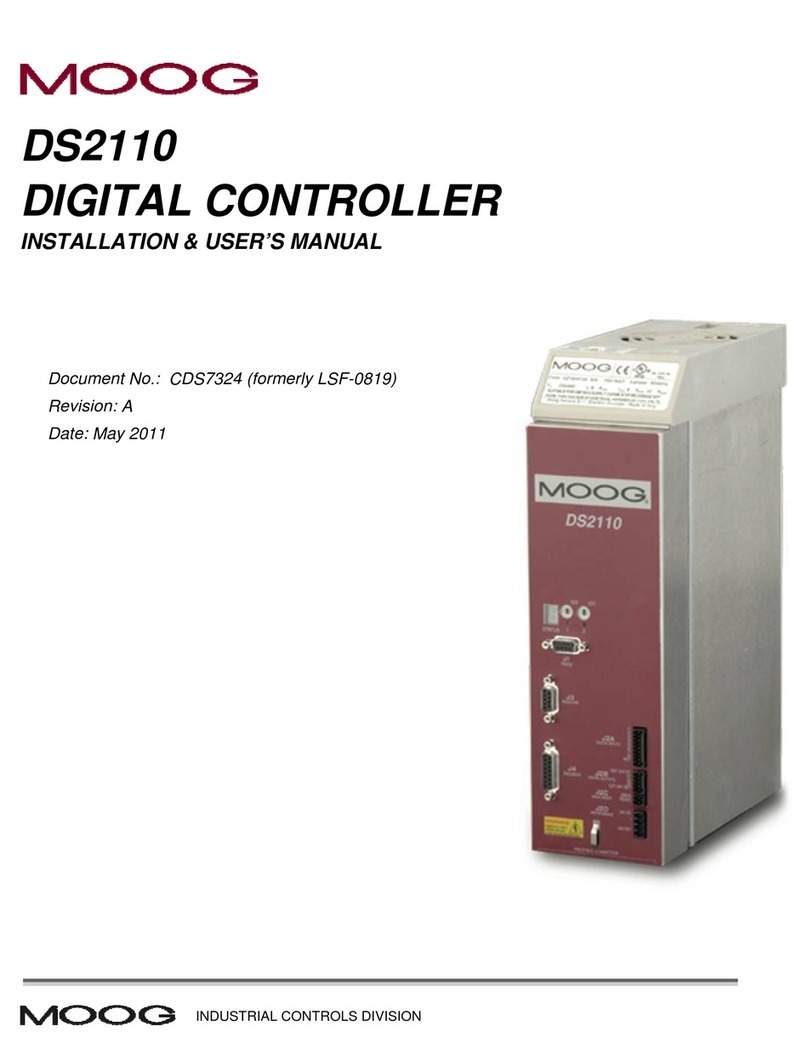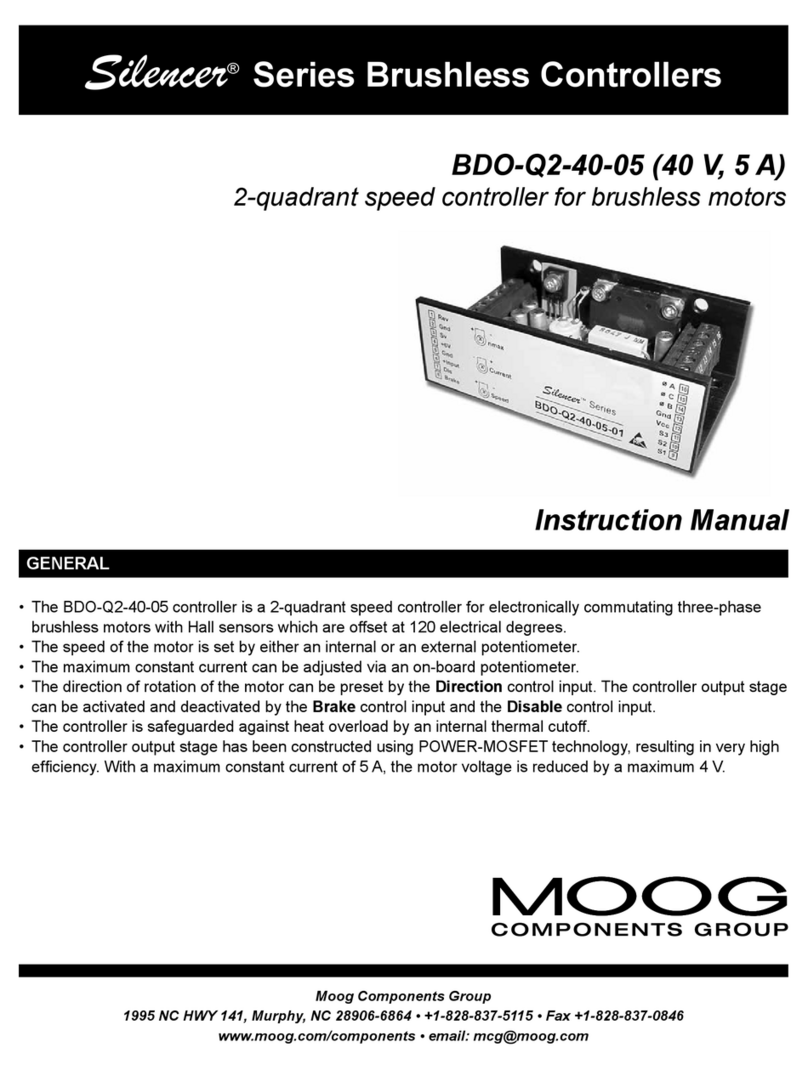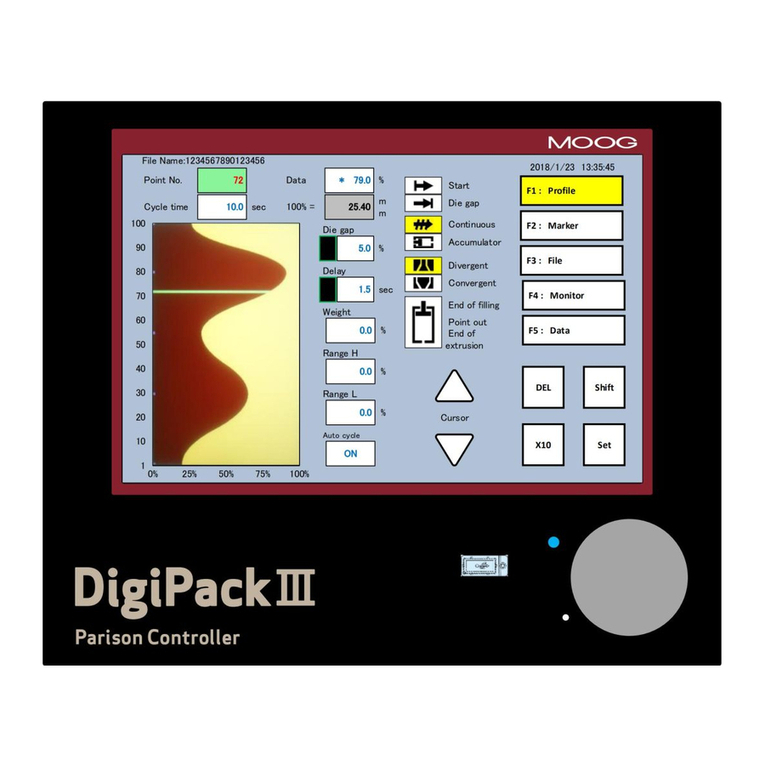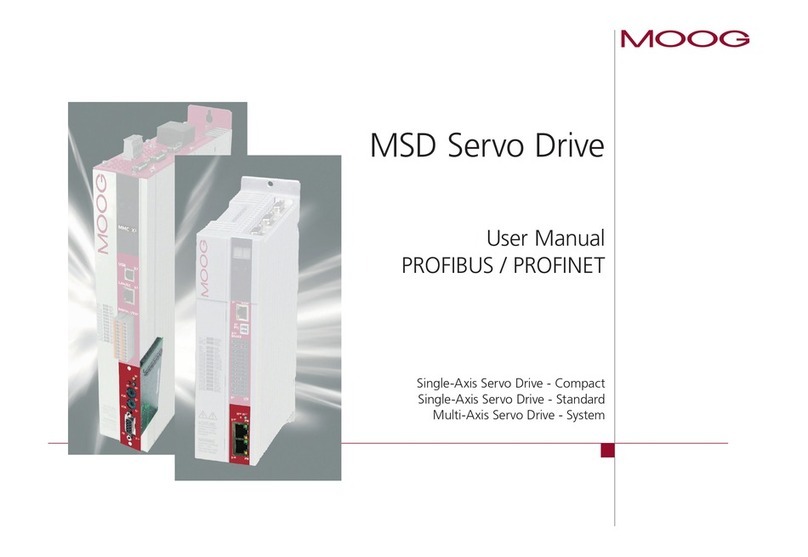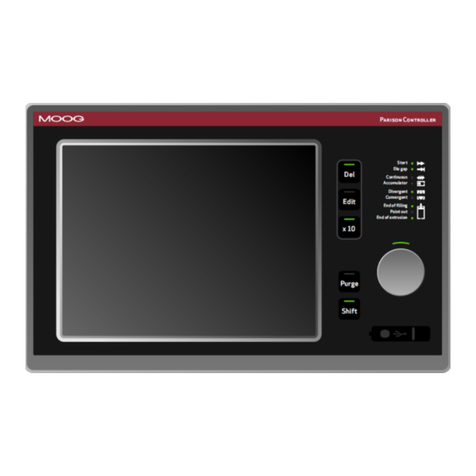
5
Moog Components Group • www.moog.com/components 5
For technical application assistance: 800-577-8685 ext. 3539 • +1-828-837-5115
3. External Voltage Control (Optional)
By applying a DC voltage between 14 (Spd) and 13 (Gnd), the following conditions are observed:
A. 0 to 0.5 volts – speed = 0.
B. 0.5 to 5.0 volts – speed range in control operation.
C. 5.0 to 10.0 volts – no pulse-width-operation-control works in simple commutation mode.
D. Speed potentiometer should be fully CCW.
E. Rotate the trimpot labeled nmax fully CW.
F. Slowly rotate the nmax trimpot CCW until the motor speed decreases slightly, then slowly rotate the trimpot back CW until
the motor is once again running at full speed (see value recorded in step E).
G. The nmax trimpot is now “tuned” to the motor currently connected to the controller and will not require readjustment unless
a different motor is connected to the controller, or the level of the input voltage is changed.
CURRENT LIMITING
Type Max. Left Position Max. Right Position
BDP-Q2-50-10 0 A > 10 A
BDP-Q2-20-10 0 A > 10 A
Note: The controller shuts down automatically when the temperature at the inside of the heat sink exceeds 80°C.
FUSING
Proper overcurrent protection (fusing) is required for the protection of this controller. We recommend a 10 amp , non-time delay fuse.
This fuse should be connected in series with the + Input line going to the controller and should be of a value less than or equal to the
maximum current rating of the controller (Max. Right Position).
Note: Considerations regarding the power supply:
Output voltage: > 12 V and < + input with a residual voltage of < 5%
Output Current: corresponding to the necessary torque and possible reserves for acceleration
Note: Procedure for calculating the necessary minimum supply voltage:
Default: Torque MB[mNm]
Operating speed nB[min–1]
Rated voltage of the motor UN[V]
Idling speed with UN n0 [min-1]
Characteristic curve slope Δn[min-1 mNm]
ΔM
Result: Vcc = *( nB+ *MB) + 4V
PUTTING INTO OPERATION
1. Connect motor connections (φA, B, and C).
2. Connect Hall sensors (S1, S2, and S3), as well as the Hall voltage supply (Vcc and Gnd) of Hall sensors.
3. Connect the control inputs according to the requirements (Rev. and Dis.).
4. Connect the supply voltage (+ input and gnd).
5. Set up the speed control for the controller (depending upon which method of speed control is used - see Speed Control).
6. After completion of step #5, speed control is now active.
7. Set the maximum current via the on-board speed potentiometer (current).
UN
n0
Δn
ΔM
Specicationsandinformationaresubjecttochangewithoutpriornotice.
© 2014 Moog Inc. MS3125, rev. 1 11/16
